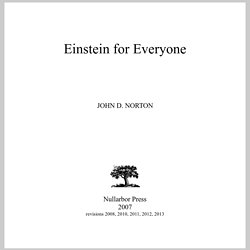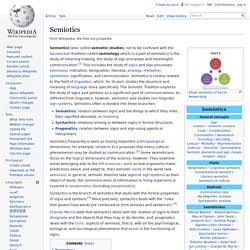

26684938.jpg (JPEG Image, 500 × 500 pixels) Learn Some of the Best Super-Simple Time-Saving Tricks This Weekend. Table of Contents. The 100 Best Lifehacks of 2010: The Year in Review. Happy New Year everyone!

It’s the first week of 2011 and many of us are getting ready to kick off the brand new year with a big bang. As we start off 2011 with our new resolutions and goals, let us now look back at the best posts at Lifehack in the past year. In this review post, I have gathered 100 of the best LifeHack articles in 2010. These articles have been selected based on your votes and how much YOU have talked about them in social media (Facebook and Twitter). I have categorized these 100 articles into 11 main categories of Overall Personal Growth, Maximizing Productivity & GTD, Lifestyle & Habits, Inspiration & Motivation, Goal Achievement & Success, Emotional Mastery, People Skills & Relationships, Communications & Writing, Business & Career, Creativity & Inspiration, Family and Miscellaneous.
Do not attempt to read this whole post at once! Let me start off with the top 10 most popular life hack posts out of the 100s of posts published in 2010. Overall Personal Growth Family. Any month that starts on a Sunday will have a Friday the 13th. Einstein for Everyone. Einstein for Everyone Nullarbor Press 2007revisions 2008, 2010, 2011, 2012, 2013 Copyright 2007, 2008, 2010, 2011, 2012, 2013 John D.

Norton Published by Nullarbor Press, 500 Fifth Avenue, Pittsburgh, Pennsylvania 15260 with offices in Liberty Ave., Pittsburgh, Pennsylvania, 15222 All Rights Reserved John D. An advanced sequel is planned in this series:Einstein for Almost Everyone. Brief Answers to Cosmic Questions. Structure of the Universe Does the Universe have an edge, beyond which there is nothing?

Are the galaxies arranged on the surface of a sphere? Why can't we see the whole universe? Does the term "universe" refer to space, or to the matter in it, or to both? Semiotics. Semiotics frequently is seen as having important anthropological dimensions; for example, Umberto Eco proposes that every cultural phenomenon may be studied as communication.[2] Some semioticians focus on the logical dimensions of the science, however.

They examine areas belonging also to the life sciences – such as how organisms make predictions about, and adapt to, their semiotic niche in the world (see semiosis). In general, semiotic theories take signs or sign systems as their object of study: the communication of information in living organisms is covered in biosemiotics (including zoosemiotics). Syntactics is the branch of semiotics that deals with the formal properties of signs and symbols.[3] More precisely, syntactics deals with the "rules that govern how words are combined to form phrases and sentences".[4] Terminology[edit] Ferdinand de Saussure, however, founded his semiotics, which he called semiology, in the social sciences:
Columbia Engineers Prove Graphene is Strongest Material. July 21, 2008 Columbia Engineers Prove Graphene is the Strongest Material Research scientists at Columbia University’s Fu Foundation School of Engineering and Applied Science have achieved a breakthrough by proving that the carbon material graphene is the strongest material ever measured. Graphene holds great promise for the development of nano-scale devices and equipment. It consists of a single layer of graphite atoms arranged in a hexagonal lattice, similar to a honeycomb. As a two-dimensional material, every atom is exposed to the surface. Until now, graphene’s estimated strength, elasticity and breaking point were based on complex computer modeling theories.
“Our team sidestepped the size issue by creating samples small enough to be defect-free,” said Columbia Professor Jeffrey Kysar. The studies were conducted by postdoctoral researcher Changgu Lee and graduate student Xiaoding Wei, in the research groups of mechanical engineering professors Kysar and James Hone. 6359. Flowers grow faster listening to music. Free Online Lectures from PBS and NPR. Ninjawords - a really fast dictionary. The Edison Innovation Foundation. 50 Things Everyone Should Know. Lateral Science - The Young Man's Book of Amusement. Freer Sackler Galleries. Anatomy Flashcards. Welcome to The Anatomy Wiki - The Anatomy Wiki. iTunes U - Learn anything, anywhere, anytime. Footnote.com - The place for original historical documents online.
Philip Zimbardo: The Secret Powers of Time (Animated) Bio Philip Zimbardo Philip Zimbardo is internationally recognized as a leading "voice and face of contemporary psychology" through his widely seen PBS-TV series, "Discovering Psychology," his media appearances, best-selling trade books on shyness, and his classic research, The Stanford Prison Experiment.

Zimbardo has been a Stanford University professor since 1968 (now an Emeritus Professor), having taught previously at Yale, NYU, and Columbia University. He continues teaching graduate students at the Pacific Graduate School of Psychology, and at the Naval Post Graduate School (Monterey). He has been given numerous awards and honors as an educator, researcher, writer, and service to the profession. Everything Explained Through Flowcharts: All of Life's Mysteries Unraveled, Including Tips for World Domination, Which Religion Offers the Best ... the Secret Recipe for Gettin' Laid Lemonade (9780061826603): Doogie Horner.